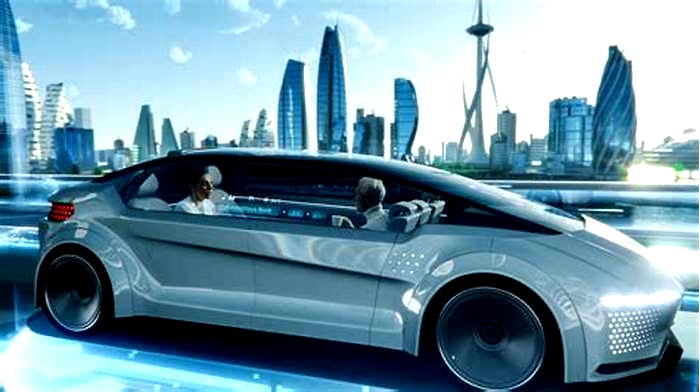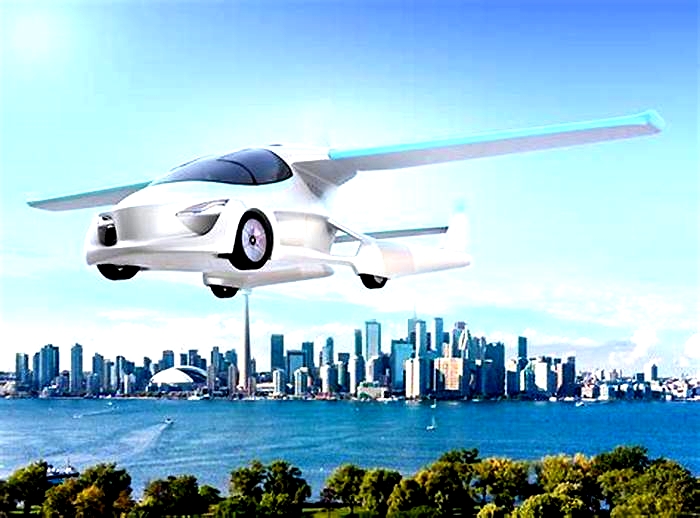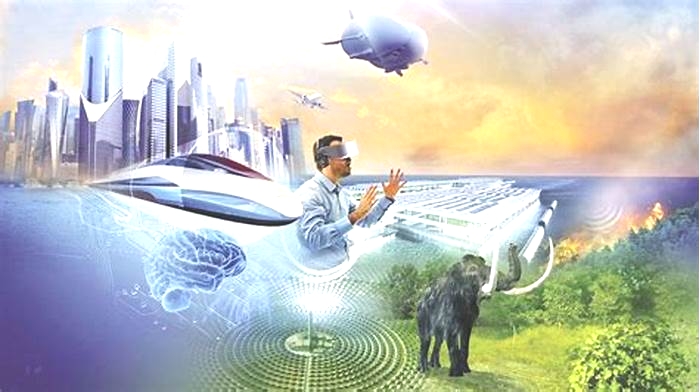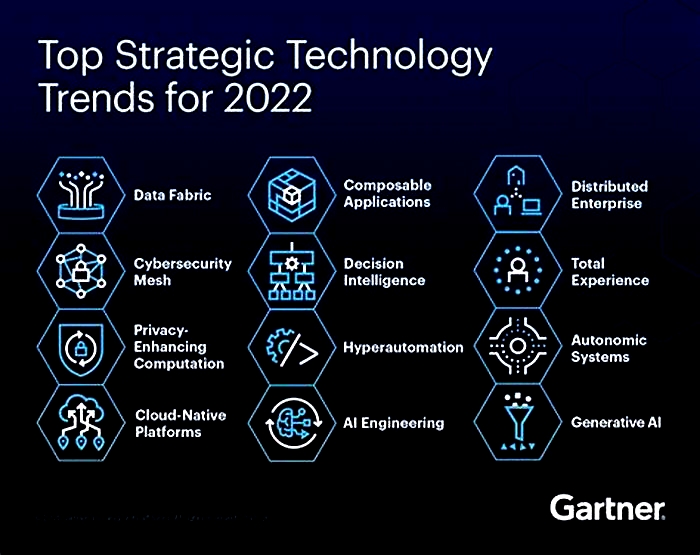Self Driving Cars and the Future of Transportation Tech Gear Revolutionizing Travel

The Future of Autonomous Vehicles: Evolution, Benefits, and Challenges
The transportation industry is at the forefront of a significant technological shift as the world witnesses the development of autonomous vehicles.
These vehicles are revolutionizing transportation by operating without human input and relying on advanced technologies such as artificial intelligence and sensors to navigate roads and highways. The integration of AI technology in autonomous driving is crucial for creating a safer, more sustainable future for the transportation industry.
The following is the technological breakthrough that could change the way we travel.
The Evolution of AI in Autonomous Driving
Autonomous vehicles have gone through various stages of development, starting from Level 0, where there is no involvement of AI technology in the vehicle, to Level 5, where the AI system can drive independently even in unrestricted areas and dynamic weather conditions. As we move towards full automation, the benefits of self-driving cars become more evident.
No automation
At this stage, there is no involvement of AI technology in the vehicle, and the driver is responsible for controlling the vehicle using their own driving skills and senses.
Driver assistance
Here, the autonomous vehicle system can assist the driver with the speed and steering of the vehicle, but the control remains with the human driver. This stage commonly includes features such as Active Cruise Control (ACC) and Parking Sensors.
Partial automation
The number of assisted features offered by the system increases at this stage, and the Advanced Driver Assistance System (ADAS) installed in vehicles helps avoid possible collisions by controlling the steering and braking system. However, humans remain in control and are responsible for staying aware of the environment.
Conditional automation
At this stage, the self-driving cars AI takes over the car control system, but human drivers can still intervene and respond if required.
High automation
This is the stage where if humans fail to intervene, the system will still be able to keep the vehicle safe. Here, AI autonomous vehicles take control of the steering wheel, speed, and even environment monitoring.
Full automation
Driverless cars are a reality at this point, and the AI system of the car can drive independently even in unrestricted areas and dynamic weather conditions. The automated driving system keeps scanning the environment and ensures safer rides.
Are you looking for job opportunities with top U.S. companies?Check out our open positions here.
Benefits of AI in Self-Driving Cars
According to the Victoria Transport Policy Institute, 90% of road accidents occur due to human errors.
The development of self-driving cars aims to reduce the probability of these incidents. Self-driving cars with AI are also capable of keeping vehicle hardware healthy for a longer tenure by driving vehicles strategically and safely, which can save car owners from traffic violations and fines.
Passengers can rest while the cars system takes care of driving, which is beneficial during long work trips. The integration of AI technology in self-driving cars is leading to advancements in the field of autonomous vehicles, making them safer, more energy-efficient, and eco-friendly.
Challenges and Limitations of AI in Autonomous Driving
Despite significant progress in autonomous vehicle development, challenges and limitations remain with the integration of AI technology. These include:
- Unpredictable human behavior on the roads represents a challenge for autonomous vehicles.
- The cost of integrating AI technology into vehicles is high, which can make it challenging for some car manufacturers to invest in autonomous driving technology.
- Cybersecurity risks associated with the integration of AI in autonomous driving can lead to safety issues if not adequately addressed.
- Current infrastructure is not designed to accommodate autonomous vehicles, meaning that new roads and transportation networks need to be built or existing ones upgraded in order to support them.
Fortunately, there are solutions available to address these issues.
For example, automakers are investing in advanced sensors and cameras that can detect human behavior on the road more accurately than ever before.
Moreover, cybersecurity measures such as encryption and authentication protocols can help protect against potential attacks on an autonomous vehicles systems.
Finally, governments around the world are investing in infrastructure upgrades that will enable safer operation of autonomous vehicles on public roads.
Statistics and Predictions for the Future of Autonomous Vehicles
The autonomous vehicle market is expected to reach between $300 billion to $400 billion by 2035, as predicted by a report by ResearchandMarkets. The ADAS and the autonomous driving market are expected to reach a threshold of $55 to $80 billion by 2030, as predicted by a report by McKinsey. These predictions indicate a massive boom in the popularity of autonomous vehicles in the future.
Government Regulation and Infrastructure Planning
Governments worldwide are already planning and regulating the infrastructure to support autonomous vehicles in the future. The deployment of fully autonomous vehicles in the urban transportation infrastructure has been a topic of debate.
However, with the governments support and regulation, we can expect to see a significant transformation in the way we commute, travel, and transport goods.
Advancements in Autonomous Vehicles: Safer, Sustainable, and Eco-Friendly
Self-driving cars are benefiting from the integration of AI technology, which is driving progress in the field of autonomous vehicles by enhancing their safety, energy efficiency, and environmental friendliness. Safer roads, reduced maintenance costs, improved comfort, smoother traffic, and reduced energy consumption are some of the benefits of AI in autonomous driving.
Ethical Considerations in AI-Powered Autonomous Driving
As the development of autonomous vehicles continues, there are important ethical considerations that need to be taken into account, particularly regarding the role of AI in decision-making.
In a scenario where an autonomous vehicle is involved in an accident, who should be held responsible the vehicle owner, the car manufacturer, or the AI system?
Additionally, there are concerns about the ethical implications of AI-powered vehicles making decisions that involve human lives, such as in situations where an autonomous car must choose between avoiding a pedestrian and swerving into another lane with other vehicles.
To address these concerns, car manufacturers and researchers are working on developing ethical guidelines for the use of AI in autonomous vehicles. One approach is to program the AI system to prioritize human safety above all else.
However, this can still raise complex ethical dilemmas, such as determining whose safety takes precedence in a given situation. There are ongoing debates about how to balance the benefits of autonomous driving with the potential risks and ethical implications.
Conclusion
As technology evolves, we can expect to see a significant transformation in the way we commute, travel, and transport goods. It is an exciting time to witness these advancements and we are excited to see what the future holds.
If you want to keep up to date with the latest news about the integration of AI in daily technology, contact us!
What Are Self-Driving Cars? The Technology Explained
A young man sitting in an autonomous car.
An autonomous vehicle is broadly defined as one equipped with technology that senses the conditions around it, including traffic, pedestrians, and physical hazards and can adjust its course and speed without a human at the controls. The terms autonomous and self driving cars are often used interchangeably.
However, as defined by the SAE, formerly known as the Society of Automotive Engineers, there are six levels of automated driving ranging from full control of a vehicle by a physical driver, assisted by advanced safety technology, to a vehicle that can operate without any on-board human input. Only that top level represents a driverless, or fully autonomous vehicle.
In this feature well define the six levels of what the SAE terms automated driving, or AD, the pros and cons of self-driving vehicles, where theyre being used, effects on traffic and the environment and what the prospects are of private citizens being able to own a car that drives itself.
What Is An Autonomous Vehicle?
An autonomous vehicle is defined by the University of Michigan Center for Sustainable Systems as one that uses technology to partially or entirely replace the human driver in navigating a vehicle from an origin to a destination while avoiding road hazards and responding to traffic conditions.
The SAEs six levels of what it terms automated driving ranges from the first three levels (which start with zero), where a driver is behind the wheel and in control, but is aided by various automated warnings or safety features such as blind spot warning and automatic emergency braking. Levels 3 and 4 represent technology in which the vehicle is self-driving under certain circumstances but may require a human driver to take over. Finally, level 5a fully autonomous, or self-driving, vehicle that does not require a human to operate the controls. This is the only level at which a vehicle is considered fully autonomous.
SAE chart showing six levels of automated driving.
How Do Self-Driving Cars Work?
Self-driving cars see whats going on around them using three main electronic eyesradar, cameras and laser-based LiDar, which stands for light detection and ranging. All three feed data into on-board processors, using sophisticated software, algorithms and machine learning to send signals to the vehicles actuators to trigger appropriate actions such as braking, steering and acceleration.
The array of sensors can detect a wide variety of road features and obstacles such as lane markings, curbs, pedestrians, cyclists or other vehicles. This is done either visually, through cameras, or by bouncing light impulses or radar signals off of surrounding objects. While self-driving automation technologies help improve safety, they are not 100% infallible, and their effectiveness can be diminished when sensors or lane markings are covered by snow or other heavy precipitation.
What Are The Pros and Cons of Driverless Cars?
Self-driving vehicles where there is either whats known as a safety driver on board or no driver at all are currently in use, mainly by fleets that include warehouse yard trucks that transport goods from one contained location to another. Companies such as Kodiak Robotics and Gatik operate self-driving commercial trucks on certain routes with safety drivers on board.
Cab of Kodiak Robotics sixth-generation driverless ready autonomous semi-truck.
While Kodiak and Gatik aspire to run their trucks with no human on board, taxi services such as Waymo and Cruise are examples of when self-driving technology goes awry. Cruise, a subsidiary of General Motors
Advantages of Self-Driving Cars
Self-driving cars offer a number of advantages over vehicles requiring hands-on drivers including convenience, access to mobility, efficiency, cost-savings and traffic congestion.
For those incapable of driving due to age or disabilities or without access to conventional methods of public transportation, self-driving taxis and other transit vehicles are seen as a way to provide mobility to get to errands, work or medical appointments. Commercial operators see self-driving vehicles as boosting cost-savings and efficiency because they can run for longer hours without having to stop for meals or breaks, and they require fewer employees.
Cars and trucks with self-driving safety technology called automated driver assistance systems, or ADAS, are already reducing traffic congestion and accidents. A report by the National High Traffic Safety Administration notes ADAS helps reduce traffic accidents because they assist a driver by anticipating imminent dangers and working to avoid them.
The combination of reducing traffic jams due to accidents and potentially decreasing the number of vehicles on the road when self-driving transit becomes more prevalent provides promising environmental benefits. A University of Michigan study concluded that when savings from the driving efficiencies associated with self-driving vehicles are factored into the equation, the net result is a reduction in lifetime energy use and associated greenhouse gas emissions of up to 9% compared to the conventional vehicles.
Challenges of Self-Driving Cars
The notion of widely available fully autonomous cars relieving travelers from any of the duties and stresses of driving remains fraught with challenges that range from cost to safety concerns. No matter how well any of the technology works, none of it so far emulates human thought, logic or instincts to make split second decisions.
However, taking the human element out of the equation also eliminates distractions or emotions from affecting the vehicles operation. For that reason, fully self-driving cars are viewed as potentially safer since the technology is designed to operate the vehicle safely and logically by detecting and reacting to traffic conditions and the route its programmed to follow.
That brings up a question of ethics. Since self-driving cars are basically robots programmed to react a certain way in a given situation, they cannot make an ethical decision, for instance, to avoid a collision. Should the car take action to prevent it from striking a person or a group of people? Germany passed a law prioritizing saving human lives over animals.
Serious accidents such as those in California and Arizona have contributed to fear and concern on the part of many communities that would just as soon not have driverless vehicles plying their streets.
Other challenges to wider adoption of self-driving cars include weather, where sensors and road markings could be obscured by snow, sleet or a hard rain. Overall cost remains a major obstacle to private ownership of fully automated vehicles as well. A 2023 study by McKinsey and Company predicts By 2030, 12% of new passenger cars are sold with L3+ autonomous technologies, and 37 percent have advanced AD technologies in 2035.
What Autonomous Car Companies Are On The Market?
GM's Super Cruise system can temporarily take over driving on certain roads and during certain ... [+] conditions. The service is offered on a subscription basis.
Right now the highest level of automation available to consumers are systems such as GMs Super Cruise, Ford Motor
There are several companies building or operating self-driving vehicles for commercial deliveries and robo transit services.
Waymo operates robotaxi service in several U.S. markets.
One of the most successful is Waymo. It operates robotaxi service in San Francisco, Metro Phoenix, and is ramping up in Los Angeles and Austin, Texas. As noted above, GMs Cruise unit has been less successful after a series of traffic accidents. Gatik operates autonomous trucks that deliver goods from distribution points to retail locations, while Kodiak Robotics adds its autonomous technology to semi-trucks running long-haul and local routes for such companies as Kroger
The Future of Self-Driving Cars
Consumer appetite for leaving the driving to technology is growing and theyre willing to pay for it, leading automakers to boost ADAS and other automation offerings, perhaps paving the way for fully self-driving cars and trucks to one day be available and affordable for individuals.
Based on consumer interest in automated driving features and commercial solutions available on the market today, in its report, McKinsey predicted ADAS and AD could generate between $300 billion and $400 billion in the passenger car market by 2035.
Indeed, the world will likely be affected in five key ways, according to artificial intelligence company Allerin: fewer traffic accidents, reduced car ownership, automated logistics including deliveries, improved livability due less noise and air pollution from fewer vehicles on the road and no parking or traffic tickets since autonomous vehicles can pick up and drop off passengers then go on their way.
Its not certain if all cars will eventually operate without a human behind the wheel and at least partially in control. According to McKinsey, any transition will be at a snails pace, projecting that in 2030, only 4% of new passenger cars sold will be installed with level 3 or higher automation functions, increasing to just 17% in 2035.
Bottom Line
Dont discard your favorite driving cap yet. While automakers are rapidly offering more sophisticated automated driver assist technologies, full, self-driving vehicles are likely to remain primarily in the realm of fleets and commercial operators for the foreseeable future.









